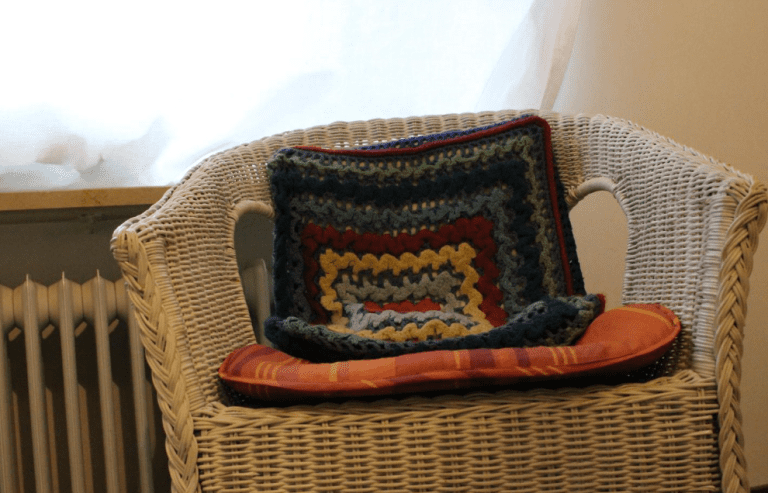As the colder months return, many homes naturally shift toward elements that feel grounding and tactile. The familiar comfort expressed in pieces from Aran is a reminder that texture carries emotion: a cable stitch can feel like memory, warmth, or continuity. When that sensibility moves from the wardrobe into the home, it encourages a softer, more intimate atmosphere. Interior comfort is not just a matter of style; it is something that can be sensed, held, and remembered.
The Quiet Power of Texture in the Home
Comfort is often discussed visually, as colour schemes, furniture placement, or symmetry. Yet the spaces that feel truly restful tend to be those where surfaces invite touch. Texture draws us closer. A room with layered fabrics feels lived-in rather than curated, intimate rather than simply styled.
Heritage textiles carry a particular kind of presence. They are rooted in techniques passed down through time, and they bring with them a feeling of continuity. In a home, that translates to warmth that is not only physical but emotional. When a knitted throw rests across a sofa, or a woven cushion softens the angle of a chair, the space begins to hold a sense of stillness and belonging.
Bringing the Language of Knits into the Living Space
Heritage knit patterns, such as the classic cable or honeycomb, can translate beautifully into interiors. They offer rhythm, structure, and subtle movement without overwhelming a room. Throws and blankets are often the first place people begin, since they can be layered easily and moved from room to room as needed. A cable-knit throw on the arm of a sofa immediately softens the silhouette of the furniture, while a pair of knitted cushions can bring quiet variation to a neutral seating arrangement.
There is also a tactile intimacy in the way knitted textiles drape. Unlike rigid or glossy fabrics, knits relax into the shape of their environment. This creates a visual language of ease, one that suggests the home is meant to be lived in rather than simply looked at.
Layering Without Clutter
Image from Freepik
Layering textures is not about adding more objects; it is about adding depth. A home that feels warm and inviting often has variation across a small number of thoughtfully chosen pieces. When selecting textiles, consider contrast rather than quantity. A chunky knit placed alongside a smoother wool or cotton allows each texture to become more noticeable. A soft, matte material paired with a slightly coarser one can create harmony without visual noise.
The key is to allow the eye to rest. When textiles echo one another in tone or palette, the room feels cohesive. Layering is most successful when it supports a steady, gentle visual flow rather than competing for attention.
Softening Architectural Edges
Many contemporary interiors feature materials such as stone, glass, or concrete. These surfaces can be striking, but they also benefit from balance. Textiles are one of the most effective ways to soften the lines and acoustics of harder architectural structures. A wool rug can warm the tone of a tiled floor; a knitted throw can relax the sharp outline of a leather or metal-framed chair.
This interplay between hard and soft is essential in creating a sense of welcome. Even in minimalist spaces, textiles can introduce dimension without interrupting the clarity of the design. A single well-chosen knitted piece can transform the mood of an entire room.
Colour Palettes That Support Calm
Heritage textiles often come in shades found in nature: sea-worn neutrals, warm creams, deep peat browns, faded greys, and soft moss greens. These palettes work especially well in homes where comfort and calm are priorities. When textiles share tonal similarities with their environment, they create continuity. This allows the room to feel settled, even before anyone enters it.
For those who prefer a brighter atmosphere, gentle winter-light tones, dusty rose, muted ochre, heathered blues, can introduce warmth without overwhelming the senses. The goal is not to recreate a theme, but to invite a sense of ease.
Choosing Pieces That Last
There is a quiet satisfaction in living with textiles that age gracefully. Natural fibres such as wool and cotton soften over time, taking on the shape and rhythms of daily use. This aligns closely with the principles of slow interior design, where objects are chosen for their longevity and emotional resonance rather than seasonal trend.
A home with thoughtfully selected textiles does not need constant refreshing. Instead, it gains character through familiarity, through the feeling of returning to something that already understands you.
Homes become meaningful when they feel lived in, when the materials within them offer both comfort and presence. Layering textiles, especially those inspired by heritage knitting traditions, invites softness into the everyday. It allows rooms to express warmth, not through decoration alone, but through the quiet language of touch and texture.


